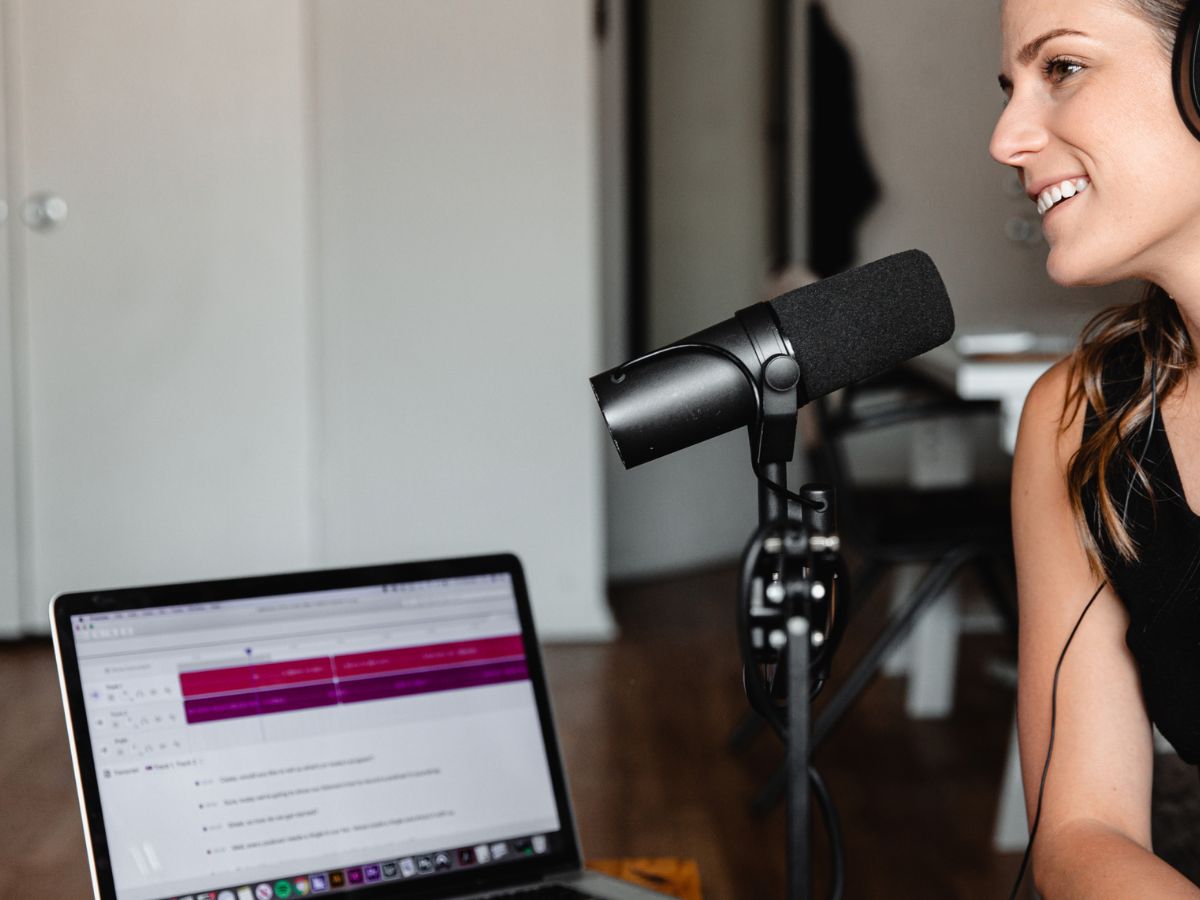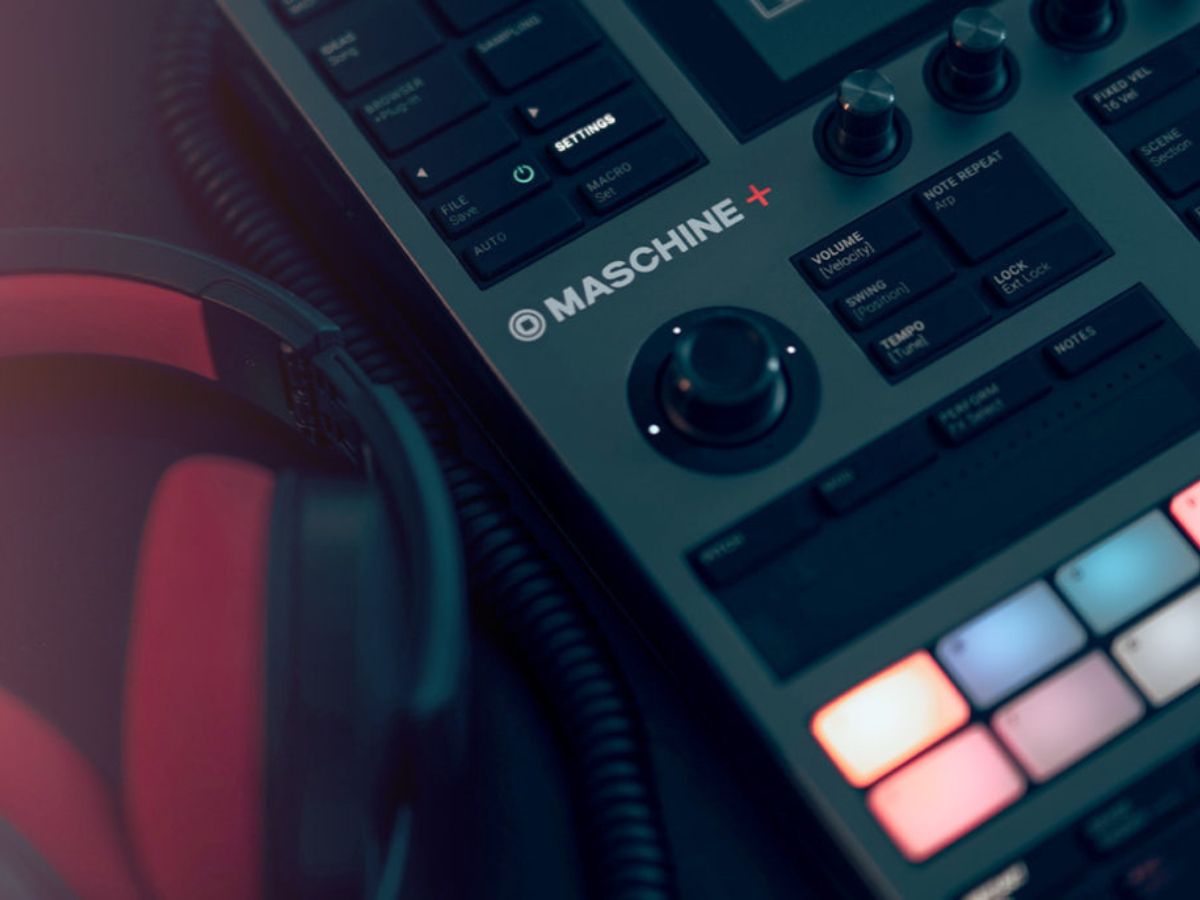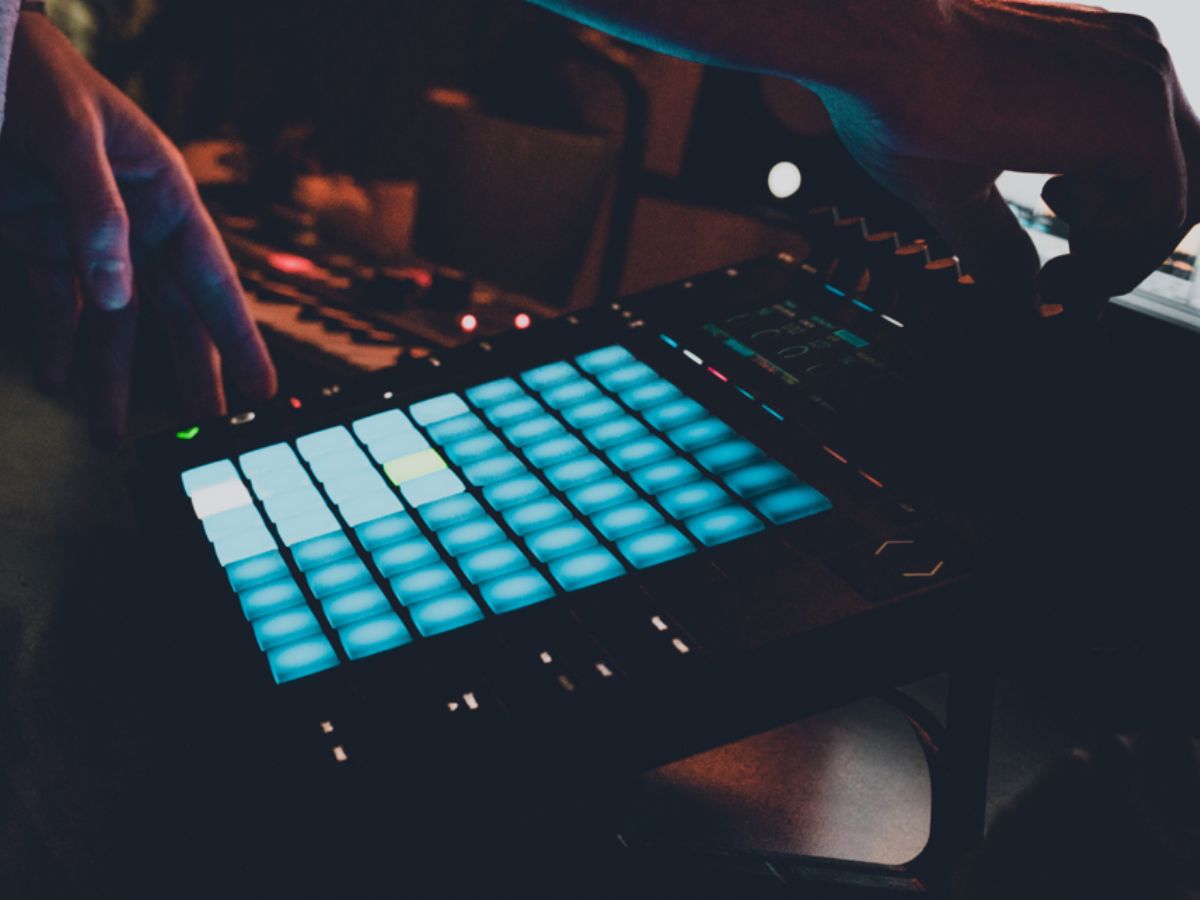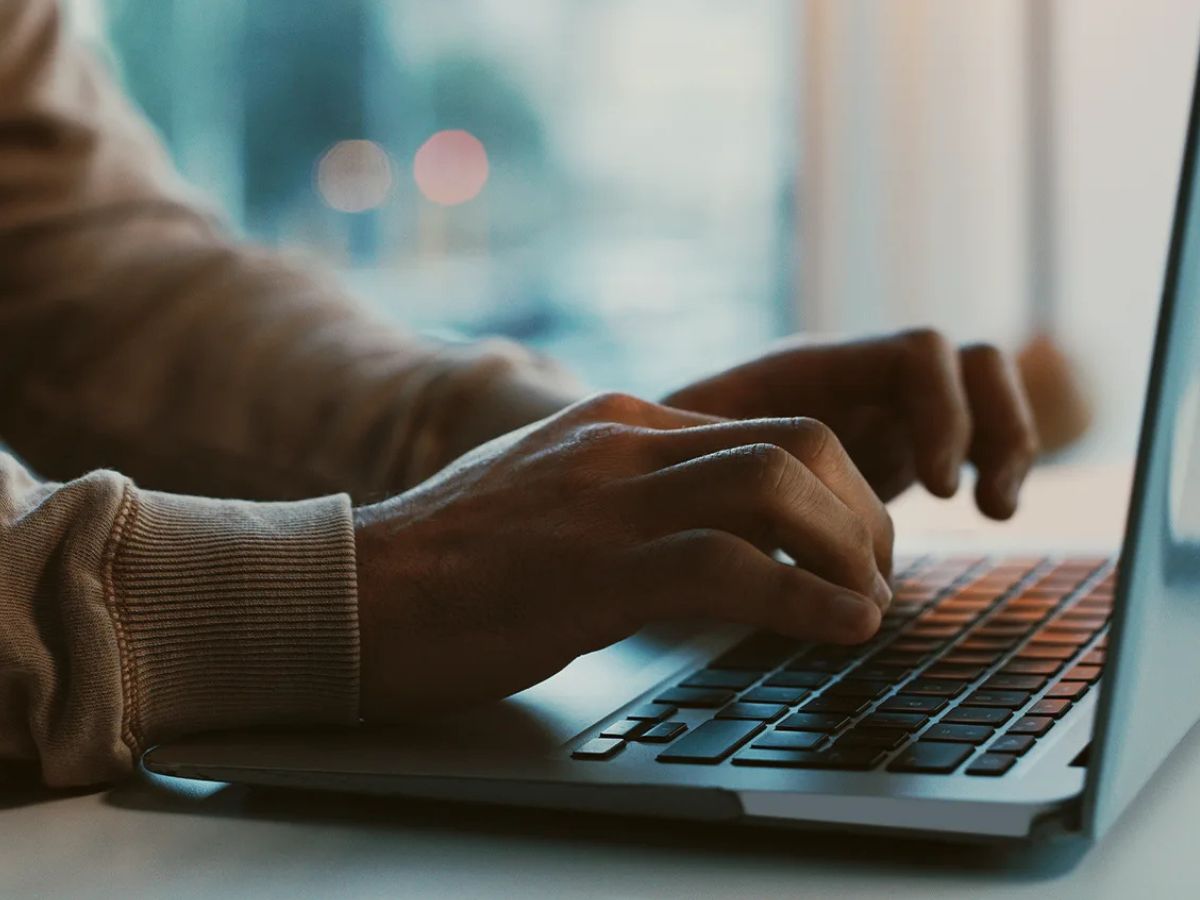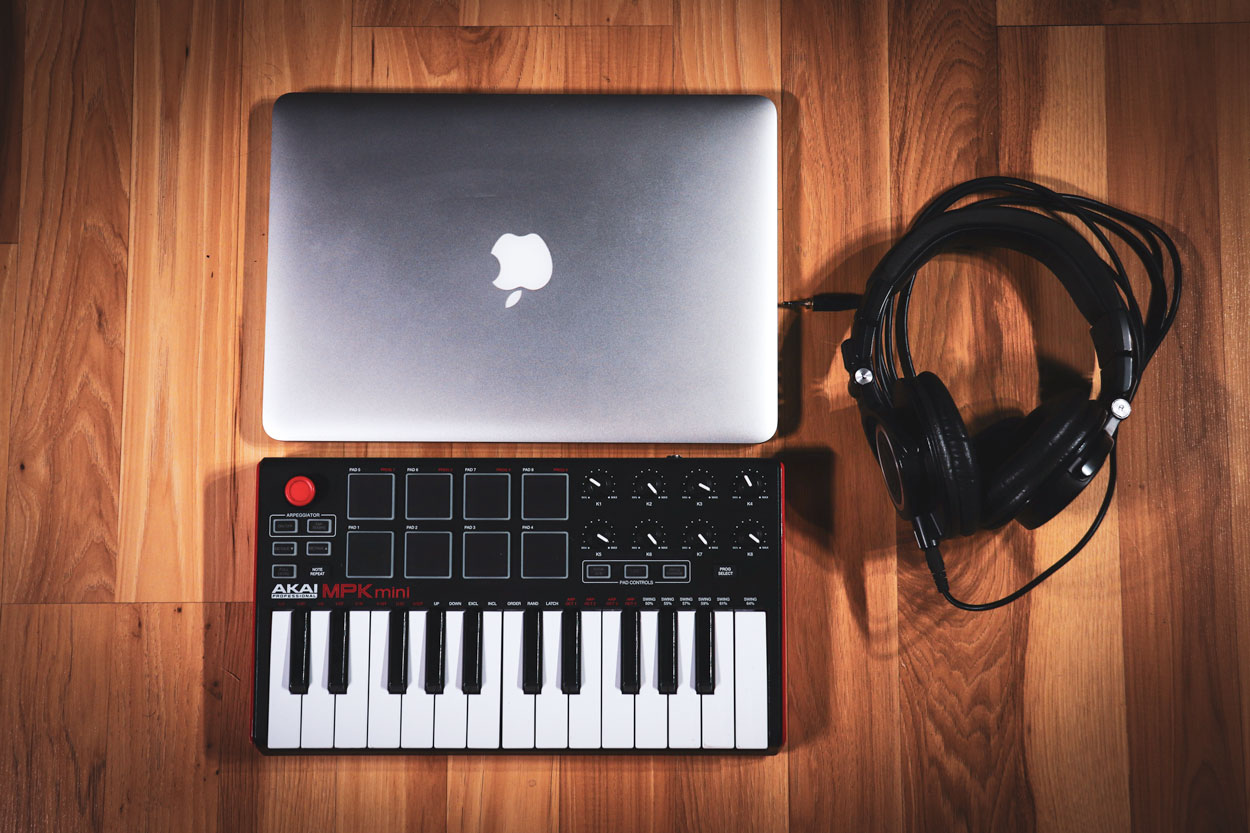

Hip Hop
How To Start Making Hip-Hop Beats
Modified: February 22, 2024
Learn how to start making amazing Hip-Hop beats with our comprehensive guide. Discover the secrets to creating professional-quality tracks from scratch.
(Many of the links in this article redirect to a specific reviewed product. Your purchase of these products through affiliate links helps to generate commission for AudioLover.com, at no extra cost. Learn more)
Table of Contents
- Introduction
- Understanding the Basics
- Getting the Right Equipment
- Setting Up Your Home Studio
- Exploring Different Beatmaking Software
- Learning About Drum Patterns and Rhythm
- Understanding Melody and Harmony in Hip-Hop Beats
- Sampling and Chopping Techniques
- Layering Sounds and Creating Grooves
- Adding Effects and Mixing Your Beats
- Arranging and Structuring Your Beats
- Finalizing the Production
- Conclusion
Introduction
Welcome to the world of Hip Hop beats! Hip Hop music has been a fundamental part of popular culture for decades, captivating audiences with its infectious rhythms, unique style, and powerful storytelling. Whether you’re an aspiring producer or a music enthusiast looking to dive into the art of beatmaking, this comprehensive guide will provide you with the knowledge and tools to start creating your own Hip Hop beats.
Hip Hop is a genre that encompasses a wide range of styles, from boom bap and trap to lo-fi and experimental beats. It has evolved from its origins in the Bronx in the 1970s to become a global phenomenon, influencing various music genres and artists worldwide. The beauty of Hip Hop lies in its ability to blend different musical elements, samples, and techniques to create innovative and captivating beats.
Creating Hip Hop beats is not just about putting together a catchy rhythm; it’s an art form that requires a deep understanding of music theory, sound design, and creative expression. In this guide, we will explore the essential aspects of beatmaking, from the basics of rhythm and melody to advanced techniques like sampling and layering.
Throughout this journey, you will learn about the equipment needed to set up your home studio, the various beatmaking software options available, and how to utilize drum patterns, melodies, and harmonies to bring your beats to life. We will also delve into the art of sampling, chopping, and manipulating sounds, as well as adding effects and mixing your beats to achieve a polished and professional sound.
Whether you have a musical background or are a complete beginner, this guide aims to provide you with the knowledge and inspiration to create your own unique Hip Hop beats. So, grab your headphones, fire up your creative spirit, and let’s dive into the world of Hip Hop beatmaking!
Understanding the Basics
Before diving into the intricacies of beatmaking, it’s essential to have a solid foundation in the basics. Let’s start by exploring the key elements that make up a Hip Hop beat.
Rhythm: Rhythm is the backbone of any beat. It gives a beat its groove and determines how listeners will move and connect with the music. In Hip Hop, the drum pattern forms the foundation of the rhythm, usually consisting of a kick drum, snare drum, and hi-hats. Understanding different drum patterns and their variations is crucial for creating dynamic and engaging beats.
Melody: Melody is the tune or musical line that carries the main theme of a beat. It can be created using various instruments, such as keyboards, guitars, or virtual instruments within beatmaking software. Melodies in Hip Hop beats can be simple or complex, and they play a vital role in adding emotion and character to the overall composition.
Harmony: Harmony refers to the combination of different musical elements, such as chords, to create depth and richness in a beat. Understanding basic music theory concepts, such as major and minor scales and chord progressions, can help you craft harmonies that complement your melodies and add complexity to your beats.
Sampling: Sampling is a cornerstone of Hip Hop beatmaking. It involves taking segments of existing songs or audio recordings and incorporating them into your beats. Sampling provides a unique and nostalgic vibe, allowing you to tap into the rich history of music while adding your own creative twist. It’s important to ensure that you have the necessary legal rights to sample copyrighted material.
Arrangement: The arrangement refers to the structure and organization of the different elements within a beat. It involves determining the order and duration of sections, such as verses, choruses, and bridges. A well-structured arrangement helps create a cohesive and engaging listening experience for the audience.
Now that we’ve covered the basics, it’s time to move on to the practical aspects of beatmaking. In the next sections, we’ll discuss the equipment needed to set up your home studio, explore different beatmaking software options, and dive deeper into techniques and concepts that will elevate your Hip Hop beats to the next level.
Getting the Right Equipment
Building a home studio and gathering the right equipment is a crucial step in your beatmaking journey. While there are no hard and fast rules on what equipment you need, having the following essentials will set you up for success:
- Computer: A reliable computer is the backbone of your beatmaking setup. Look for one with a fast processor, ample RAM, and sufficient storage space.
- Audio Interface: An audio interface connects your computer to external audio devices, such as microphones, instruments, and monitors. It converts analog signals to digital and vice versa, ensuring high-quality audio recording and playback.
- Studio Monitors or Headphones: Good quality studio monitors or headphones are essential for accurately monitoring and fine-tuning your beats. Look for a pair that offers a flat frequency response, allowing you to hear all the nuances in your mix.
- MIDI Keyboard Controller: A MIDI keyboard controller enables you to play and record virtual instruments or software synths. It gives you the ability to add melodies, chords, and other musical elements to your beats more intuitively.
- Digital Audio Workstation (DAW) Software: A DAW is the software platform where you’ll compose, arrange, mix, and master your beats. There are numerous DAW options available, such as Ableton Live, FL Studio, Logic Pro, and Reason. Choose one that suits your workflow and preferences.
- Samples and Sounds: Building a library of high-quality samples and sounds is essential for creating unique and professional-sounding beats. You can either purchase sample packs or collect your own samples from various sources like vinyl records, online databases, or field recordings.
Keep in mind that this is a basic equipment list, and you can always expand and upgrade your setup as you grow as a beatmaker. Additionally, having a dedicated space for your studio, sound treatment to minimize reflections, and a comfortable chair can greatly enhance your creativity and workflow.
Once you’ve gathered your equipment, it’s time to set up your home studio. Arrange your gear in a way that promotes an efficient workflow and ensures easy accessibility. Invest in cable management solutions to keep your cables organized and minimize clutter.
Remember, while having professional-grade equipment can certainly help improve the quality of your beats, it’s ultimately your creativity and skill that will make the biggest difference. Don’t be discouraged if you have limited resources – what matters most is your passion for music and your willingness to learn and experiment.
With the right equipment in place, you’re ready to dive into the world of beatmaking. In the next sections, we’ll explore different beatmaking software options and guide you through the process of creating your own Hip Hop beats.
Setting Up Your Home Studio
Creating a dedicated space for your home studio is essential for immersing yourself in the beatmaking process and ensuring a productive and creative environment. Here are some key steps to setting up your home studio:
- Selecting the Right Room: Choose a room in your home that offers enough space for your equipment and provides good acoustics. Ideally, you want a room with minimal background noise and minimal sound reflections.
- Sound Treatment: Depending on your budget and the specifics of the room, consider implementing some sound treatment to improve the acoustics. This can include using acoustic panels or diffusers on the walls, bass traps in the corners, and a reflection filter for your microphone if you’re planning on recording vocals.
- Furniture and Desk Setup: Invest in a sturdy desk or workstation that can accommodate your computer, audio interface, MIDI keyboard, and other peripherals. Ensure that you have enough space for comfortable mixing and arranging. Ergonomic considerations such as an adjustable chair and proper monitor placement can also contribute to long-term comfort and productivity.
- Power and Cable Management: Make sure you have enough power outlets to support your equipment. Consider using a surge protector to protect against power surges. Implement cable management solutions to keep your cables organized and prevent trip hazards.
- Lighting: Adequate lighting is crucial for a comfortable and productive workspace. Aim for a balance between natural and artificial light, ensuring that there are no glares on your computer screen or reflective surfaces that may interfere with your workflow.
- Ergonomics: Take care of your physical well-being by setting up your studio in an ergonomic manner. Adjust your chair, keyboard, and monitor to ensure proper posture and reduce the risk of strain or discomfort during long producing sessions.
- Inspiration and Personalization: Surround yourself with inspiration! Hang up posters, artwork, or photos that reflect your musical influences or create a mood board of your favorite album covers. Personalize your space to make it uniquely yours.
Remember, the goal of setting up your home studio is to create a space that fosters creativity, comfort, and efficiency. Adapt these steps to your specific needs and budget. The most important factor in your studio setup is your ability to focus and express your musical ideas.
With your home studio up and running, the next step is to explore the different beatmaking software options available. In the next section, we’ll delve into the world of beatmaking software and help you choose the right digital audio workstation (DAW) for your needs.
Exploring Different Beatmaking Software
When it comes to creating Hip Hop beats, having the right beatmaking software, also known as a digital audio workstation (DAW), is essential. A beatmaking software acts as your creative playground, allowing you to compose, arrange, mix, and master your beats. Let’s explore some popular beatmaking software options:
- Ableton Live: Ableton Live is a versatile and widely-used DAW, favored by many producers in the Hip Hop community. It offers intuitive workflow, powerful MIDI capabilities, and excellent time-stretching algorithms, making it ideal for both live performance and studio production.
- FL Studio: FL Studio, previously known as Fruity Loops, is a popular choice among beatmakers. It boasts a user-friendly interface, a vast library of instruments and plugins, and a powerful step sequencer, making it great for creating intricate drum patterns and melodic compositions.
- Logic Pro: Logic Pro is a robust DAW that is exclusive to Apple users. It offers a comprehensive range of features, including a vast sound library, powerful MIDI editing tools, and advanced mixing and mastering capabilities. Logic Pro is known for its user-friendly interface and is favored by many professional producers.
- Reason: Reason is a unique DAW that emulates the experience of working with hardware equipment in a virtual environment. It offers a wide range of virtual instruments, effects, and a modular rack design, allowing for endless sound design possibilities and creativity.
- Pro Tools: Pro Tools is the industry standard DAW used in professional studios. While primarily known for its audio recording and editing capabilities, it also offers a comprehensive set of tools for beatmaking and music production. Pro Tools is highly regarded for its stability and robust mixing and mastering features.
These are just a few examples of the numerous beatmaking software options available. It’s important to choose a DAW that suits your workflow, preferences, and budget. Many DAWs offer free trial versions, giving you the opportunity to test them out before committing to a purchase.
Regardless of the DAW you choose, the key is to familiarize yourself with its features and workflow. Explore tutorials, online forums, and user communities dedicated to your chosen software to learn tips, tricks, and techniques specific to that DAW. This will accelerate your learning process and allow you to fully unleash your creative potential.
Once you have selected your beatmaking software, it’s time to dive into the world of drum patterns, melodies, and chord progressions. In the next sections, we’ll explore the foundation of creating captivating beats, starting with drum patterns and rhythm.
Learning About Drum Patterns and Rhythm
When it comes to Hip Hop beats, the drum pattern is the backbone that sets the groove and drives the energy of the track. Understanding different drum patterns and rhythm is essential for creating dynamic and captivating beats. Let’s dive into the fundamentals:
Kick Drum: The kick drum, also known as the bass drum, provides the rhythmic foundation of a beat. It typically plays on beats one and three in a four-beat measure, giving the beat its strong and steady pulse.
Snare Drum: The snare drum adds texture and accents to the beat. It typically plays on beats two and four, providing a rhythmic “snap” that gives the beat its groove and helps drive the track forward.
Hi-Hats: The hi-hats provide the constant rhythmic element in a beat. They can be open or closed, creating variation and adding texture to the rhythm. Experimenting with different hi-hat patterns, such as syncopated rhythms or offbeat accents, can add interest and complexity to your beats.
Other Percussion: In addition to the kick, snare, and hi-hats, incorporating other percussion elements, such as shakers, tambourines, claps, or unique sound effects, can help add character and flavor to your beats.
Experimenting with variations and combinations of these drum elements is key to creating unique and interesting beats. Don’t be afraid to step out of the traditional drum pattern and explore different rhythms and groove possibilities. Be creative and let your instincts guide you.
It’s also worth noting that many beatmaking software options provide drum machines, sample libraries, and drum sequencers that can simplify the process of creating drum patterns. These tools allow you to program and manipulate drum sounds with precision and ease.
As you experiment with drum patterns, listen to a wide range of Hip Hop songs and analyze the drum grooves of popular beats. Pay attention to how producers program and arrange their drums, and try to incorporate similar techniques into your own beats. This will help you develop a sense of rhythm and improve your ability to create engaging drum patterns.
Remember, creating great drum patterns is about finding the right balance between simplicity and complexity and knowing when to add subtle variations and accents. Practice, experimentation, and active listening will help you develop your own unique rhythmic style.
In the next sections, we’ll explore the concepts of melody and harmony, and how they play a crucial role in creating memorable Hip Hop beats.
Understanding Melody and Harmony in Hip-Hop Beats
Melody and harmony are vital elements in creating memorable and impactful Hip-Hop beats. They add depth, emotion, and a unique musical character to your compositions. Let’s explore the importance of melody and harmony in beatmaking:
Melody: Melody is the musical line or tune that carries the main theme of a beat. It is the part of the music that listeners typically hum or remember. In Hip-Hop, melodies can be created using various instruments, such as keyboards, synthesizers, or virtual instruments within beatmaking software.
When creating melodies for your beats, consider the mood and emotion you want to convey. Experiment with different melodic ideas, incorporating intervals, scales, and musical motifs that resonate with the vibe you are aiming for. Simple melodies can often be the most effective, so don’t be afraid to explore catchy and memorable hooks.
Harmony: Harmony refers to the combination of different musical elements, such as chords, that support the melody. Harmonies provide a sense of depth and richness to your beats. Understanding basic music theory concepts, such as major and minor scales, chord progressions, and chord voicings, can help you create harmonies that complement your melodies.
In Hip-Hop, harmony can be as simple as a basic triad or can include more complex chord progressions, depending on the mood and style you want to achieve. Experiment with different harmonic structures, exploring different inversions and extensions, to find chords that add tension, release, and emotional impact to your beats.
One popular technique in Hip-Hop is the use of “sampled” chords or chord progressions from existing songs. This involves taking chords from another piece of music and incorporating them into your beat. It adds a nostalgic and familiar element to your composition, allowing you to tap into the rich history of music while adding your own creative twist.
As you develop your melodic and harmonic skills, consider the overall arrangement of your beats. Verses, choruses, bridges, and breakdowns provide opportunities for variation and development within your melody and harmony. Use these sections to introduce new melodic and harmonic ideas or to create contrast and tension in your beats.
Incorporating melody and harmony effectively in your Hip-Hop beats requires practice, experimentation, and a willingness to explore different musical possibilities. Continuously listen to a variety of music and study the melodic and harmonic choices made by producers and musicians. This will help you develop your own unique style and sensibility.
In the next sections, we’ll dive into sampling and chopping techniques, which are integral to the creative process of many Hip-Hop producers.
Sampling and Chopping Techniques
Sampling and chopping are integral techniques in Hip-Hop beatmaking that allow producers to take existing sounds and manipulate them to create unique and innovative compositions. Let’s explore the art of sampling and chopping and how they can elevate your beats:
Sampling: Sampling involves taking segments or snippets of existing songs, recordings, or sounds and incorporating them into your beats. This technique is the backbone of Hip-Hop, allowing producers to pay homage to influential artists, create nostalgic vibes, and add a layer of musical depth to their compositions.
When sampling, it’s important to ensure that you have the necessary legal rights to use the material. This can include acquiring sample clearance, using royalty-free samples, or creating your own recordings to sample.
Sampling can be done from vinyl records, digital libraries, YouTube videos, or other audio sources. Advanced beatmaking software allows you to extract and manipulate specific sections of the sample, such as the drums, melodies, or vocals, for further manipulation and creativity.
Chopping: Chopping involves slicing and rearranging sections of a sample to create new musical ideas and rhythms. This technique allows you to isolate specific elements of a sample, such as drum hits, melodic phrases, or vocal snippets, and rearrange them in a way that suits your beat.
Chopping can be done manually, where you cut the sample into individual parts and rearrange them on your beat-making software, or through the use of dedicated chopping tools and plugins that automate the process.
Experiment with different slicing techniques, such as straight cuts, stutter effects, or time-stretching, to create unique and dynamic patterns from your chopped samples. Use techniques like reverse playback, pitch shifting, or adding effects to further manipulate and transform the original sound.
By combining sampled elements with your own drum patterns, melodies, and harmonies, you can create intricate and engaging compositions that showcase your creativity and unique musical perspective.
Sampling and chopping provide endless possibilities for crafting beats with a distinct personality and style. However, it’s important to find a balance between using samples as a creative tool and developing your own original musical ideas. Experiment with different combinations, techniques, and genres to create a sound palette that reflects your artistic vision.
In the next sections, we’ll explore techniques for layering sounds and creating grooves to add depth and complexity to your Hip-Hop beats.
Layering Sounds and Creating Grooves
Layering sounds and creating grooves are essential techniques in Hip-Hop beatmaking that can add depth, texture, and complexity to your compositions. Let’s dive into the art of layering sounds and creating compelling grooves for your beats:
Layering Sounds: Layering involves combining multiple sounds or instruments to create a rich and full-bodied sonic landscape. By layering different elements, such as drums, synths, samples, or live recordings, you can create unique and dynamic textures that enhance the overall impact of your beats.
Experiment with layering different drum sounds to create a punchy and well-rounded drum kit. Combine different types of kicks, snares, hi-hats, and percussion to create a unique rhythm section. Use EQ, compression, and other effects to blend the sounds together and achieve clarity and balance.
Layering melodic elements can also add depth and richness to your beats. Consider combining multiple samples, synthesizers, or virtual instruments to create harmonies, counter-melodies, or atmospheric textures. Adjust the volume, panning, and processing of each layer to create a cohesive and balanced sound.
Creating Grooves: Groove is the rhythmic feel or pattern that gives a beat its unique character and makes it impossible not to nod along. Creating compelling grooves requires a combination of rhythmic elements, timing, and dynamics that make the beat feel alive and infectious.
Experiment with different patterns, accents, and variations in your drum programming to create grooves that make the listener move. Incorporate techniques like swing, ghost notes, or offbeat accents to add syncopation and groove to your beats.
Layering percussion elements, such as shakers, tambourines, or claps, can also contribute to the groove by adding rhythmic complexity and enhancing the overall energy of the beat. Experiment with different percussive patterns and variations to find the perfect balance that makes your beat groove.
Furthermore, utilizing syncopation in melodies and harmonies can create infectious grooves. Explore rhythmic patterns that play against the expected beat or accent offbeat elements to inject movement and energy into your music.
As you continue to develop your beatmaking skills, actively listen to the grooves in your favorite Hip-Hop tracks. Pay attention to the subtle nuances, the placement of accents, and the interaction between different elements in the beat. This will help you refine your own sense of groove and elevate the quality of your compositions.
In the next sections, we’ll delve into the process of adding effects, mixing your beats, and arranging them to create polished and professional-sounding Hip-Hop productions.
Adding Effects and Mixing Your Beats
Adding effects and mixing your beats are crucial steps in the beatmaking process that can elevate your compositions to a polished and professional level. Let’s explore the art of adding effects and mixing to create a sonically cohesive and impactful Hip-Hop production:
Adding Effects: Effects can enhance and shape the individual sounds in your beat, adding depth, dimension, and character. Here are some common effects used in Hip-Hop beatmaking:
- Equalization (EQ): EQ adjusts the frequency balance of a sound, allowing you to cut or boost specific frequency ranges. Use EQ to carve out space for different elements, highlight certain characteristics, or shape the overall tonality of your beats.
- Compression: Compression helps control the dynamic range of a sound, ensuring that it sits evenly in the mix. It can add punch and sustain to drums, smoothen out vocals, and give your beats a more cohesive and polished sound.
- Reverb and Delay: Reverb and delay create space, ambience, and depth in your beats. They can make your sounds appear larger, add a sense of space, and create a more immersive listening experience.
- Modulation Effects: Modulation effects like chorus, phaser, and flanger can add movement and character to your sounds. Experiment with these effects to create unique and ethereal textures.
- Distortion and Saturation: Distortion and saturation effects can add warmth, grit, and harmonic richness to your sounds. Use them to add character to drums, synths, or samples and to create a more aggressive or vintage vibe.
Remember, the key to using effects is to enhance your sounds without overwhelming them. Use effects sparingly and with purpose to maintain the clarity and impact of your beats.
Mixing Your Beats: Mixing is the process of balancing the individual elements within your beat and creating a cohesive, well-defined soundstage. Here are some tips for mixing your beats:
- Leveling: Adjust the volume levels of each element to ensure they are balanced and no individual sound overpowers the others.
- Panning: Pan your sounds left or right within the stereo field to create a sense of width and separation. This helps give your beat more depth and clarity.
- Spatial Effects: Use techniques like reverb, delay, and stereo imaging to create a sense of space and depth in your mix. This allows for a more immersive listening experience and can make your beats feel larger than life.
- EQ and Compression: Use EQ to shape the tone of your sounds and control any unwanted frequencies. Apply compression to control the dynamic range and add punch and cohesion to your beats.
- Mix Buss Processing: Apply processing to the master or mix buss to glue the elements together and add the final polish to your beat. This can include subtle compression, EQ, or saturation to enhance the overall sound.
Keep in mind that mixing is both an artistic and technical process. Trust your ears, experiment with different techniques, and take the time to fine-tune your mix until you achieve the desired sonic balance.
In the next sections, we’ll focus on arranging and structuring your beats to create engaging and cohesive musical compositions.
Arranging and Structuring Your Beats
The arrangement and structure of your beats play a crucial role in creating engaging and memorable compositions. A well-crafted arrangement can take your beats from a collection of ideas to a cohesive and impactful musical journey. Let’s delve into the process of arranging and structuring your beats:
Verse-Chorus Structure: The verse-chorus structure is a popular format used in many Hip-Hop beats. It typically consists of alternating sections called verses and choruses. Verses deliver the main lyrics and storytelling, while choruses provide a catchy and memorable hook. This structure helps create familiarity and engages the listener.
Bridge and Pre-Chorus: To add variety and build anticipation, you can incorporate bridge and pre-chorus sections in your beats. The bridge offers a contrasting musical passage that adds excitement and surprises the listener, while the pre-chorus serves as a transitional section between the verse and chorus, building tension and setting up the main hook.
Instrumental Breakdowns: Instrumental breakdowns add diversity and dynamics to your beats. They provide a moment for the music to breathe and allow individual elements, such as synths, drums, or melodies, to shine. Experiment with removing or muting certain elements during breakdowns to create tension and keep the listener engaged.
Transitions: Smooth transitions are essential for a seamless and enjoyable listening experience. Use techniques like risers, sweeps, reverse effects, or filter sweeps to transition between different sections of your beat. These techniques add excitement and indicate to the listener that a change is about to occur.
Dynamics and Variation: Incorporating dynamic changes and variations keeps your beats interesting and captivating. Experiment with layering or removing elements, changing melodies or chord progressions, adding fills, or adjusting the intensity of your drums to create ebb and flow within your beats.
Storytelling: Your beat can tell a story by using the arrangement to guide the listener through different emotions and moods. Consider how each section contributes to the overall narrative and structure your beat in a way that reflects the desired emotional journey.
Remember, there are no hard and fast rules when it comes to arranging and structuring your beats. Trust your instincts and let your creativity guide you. Experiment with different arrangements, take inspiration from your favorite tracks, and don’t be afraid to try different techniques to find what works best for your unique sound.
Once you have a solid arrangement in place, it’s time to finalize the production of your beat. In the next section, we’ll explore the essential steps for giving your beat a professional touch and preparing it for release.
Finalizing the Production
Finalizing the production of your beat is a crucial step in creating a professional and polished sound. This phase involves fine-tuning your mix, adding finishing touches, and preparing your beat for release. Let’s explore the essential steps to finalize your production:
Refining the Mix: Take the time to reassess your mix and make any necessary adjustments. Ensure that each element sits well within the soundstage, balancing the volume, panning, and frequency content. Pay attention to details such as eliminating unwanted noise, tightening up timing issues, and addressing any sonic imbalances. A clean and well-balanced mix is the foundation of a professional-sounding beat.
Mastering: Mastering is the final stage of the production process, where the entire track is polished and optimized for various playback systems. Consider hiring a professional mastering engineer or invest in mastering software to bring out the full potential of your beat. Mastering involves enhancing the overall volume, dynamic range, and clarity, while ensuring that the beat retains its musicality and impact.
Adding Finishing Touches: Add any desired finishing touches to enhance the overall impact of your beat. This could include subtle background textures, creative effects, or vocal ad-libs to add depth and character. These extra elements can elevate your beat and make it stand out from the crowd.
Preparing for Release: Before releasing your beat, ensure that you have taken care of any legal considerations. If you have used samples, make sure you have secured the necessary clearances or used royalty-free materials. Give your beat a final listen to ensure that it meets your artistic vision, and make any additional adjustments if needed.
Metadata and Tagging: It’s essential to include proper metadata and tagging for your beat. This allows for easy identification, organization, and proper crediting. Add relevant information such as track title, artist name, genre, and any relevant production credits. Tag your beat with relevant keywords and descriptors to increase its discoverability online.
File Formats and Delivery: Determine the appropriate file formats and quality levels for your intended release platforms. Consider providing both high-quality WAV files for professional use and compressed formats like MP3 for easy streaming and sharing. Use a reliable file-sharing service or distribution platform to deliver your beat to artists, labels, or streaming platforms.
Protecting Your Work: Consider copyrighting your beat to protect your intellectual property. Consult with a legal professional to understand your rights and options. It is essential to protect your creative efforts and ensure that you receive proper recognition and compensation for your work.
By following these steps and putting the necessary time and effort into finalizing the production of your beat, you’ll be one step closer to creating an impactful and professional-sounding composition. Remember, attention to detail and a focus on quality will set you apart and help your beat resonate with listeners.
Now that you have finalized your beat, it’s time to share it with the world and continue honing your craft. In the concluding section, we’ll summarize the key takeaways and provide some final thoughts on the art of Hip-Hop beatmaking.
Conclusion
Congratulations on embarking on your journey into the world of Hip-Hop beatmaking! Throughout this comprehensive guide, we have covered the essential aspects of creating captivating and engaging beats. From understanding the basics of rhythm and melody to exploring advanced techniques like sampling, layering, and mixing, you now have a solid foundation to create your own unique sound.
Remember, beatmaking is an art form that requires continuous learning, practice, and experimentation. Don’t be afraid to push boundaries, think outside the box, and develop your own style and approach. Drawing inspiration from the rich history of Hip-Hop while adding your own creative twist will help you carve out your unique sound and leave a lasting impact.
As you progress on your beatmaking journey, keep refining your skills and knowledge. Stay updated with the latest music trends, explore new sounds, and never stop learning. Collaborate with fellow artists, share your beats, and be open to constructive feedback, as it will help you grow and improve as a producer.
Lastly, remember that success in beatmaking comes from passion, dedication, and a love for the music. Stay true to yourself and let your passion drive the creative process. Embrace challenges, celebrate successes, and always strive for excellence.
Now, armed with your deep knowledge of the basics, equipment, software, rhythm, melody, sampling, layering, effects, mixing, arrangement, and finalization, it’s time to unleash your creativity and start making some amazing Hip-Hop beats!
Good luck on your beatmaking journey, and may your beats inspire and move audiences around the world!


